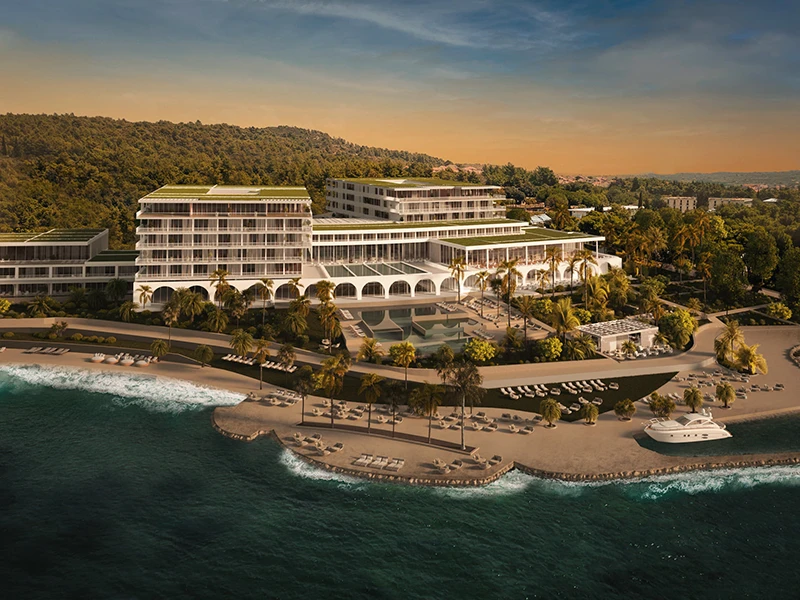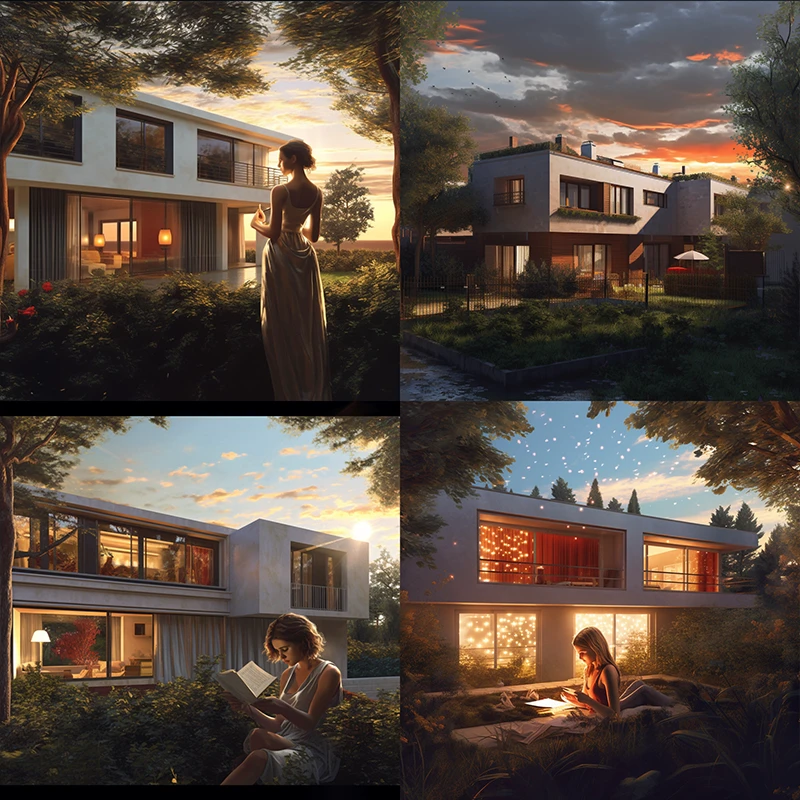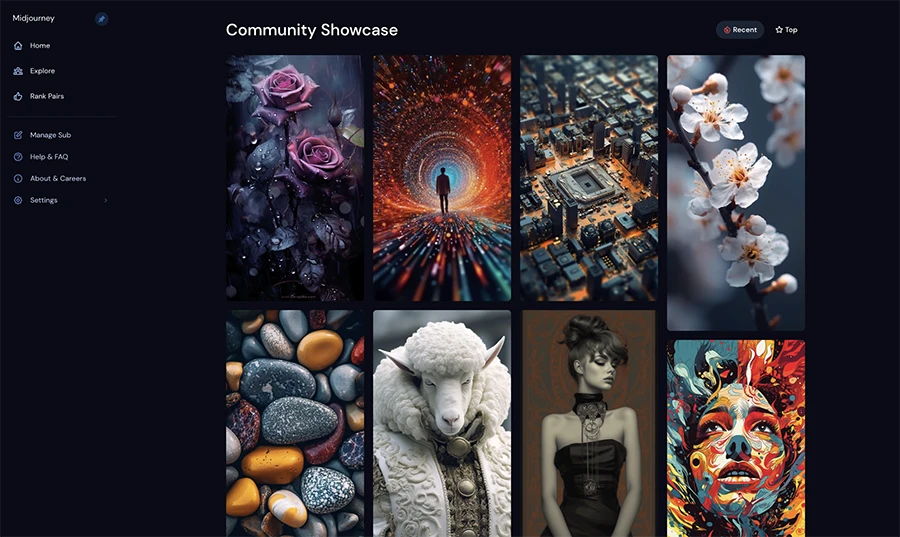The question of whether Artificial Intelligence (AI) will replace 3D artists or architects is currently a focal point of debate amongst the creative community. AI’s surge in popularity has drawn reactions across the spectrum. Some artists enthusiastically adopt this emerging technology, while others staunchly resist it, mainly due to copyright infringement concerns regarding the unauthorized training of AI on copyrighted artworks. A cautiously optimistic group foresees AI as a powerful ally in the creative process, offering artists greater expressive freedom and alleviating tedious tasks – if the copyright issue can be resolved.
However, there’s a pressing concern amongst many: instead of just automating monotonous tasks and freeing up more time for creative pursuits, will AI eventually replace artists entirely? This question has significant implications for both 3D visualization experts and their clientele.
As a 3D visualization studio, we constantly monitor advancements in technology that could potentially influence our industry. And AI undoubtedly fits that bill. But will it supplant 3D artists? That’s the intriguing question we aim to explore in this article. So, will AI render 3D artists or architects obsolete in the foreseeable future? Let’s dig deeper to uncover the truth!
1. How does AI work?

Artificial intelligence operates as a neural network designed to seek out and identify patterns in the data it receives. This data is analyzed and transformed into something new by the software. While there are various types of AI tools available, our focus in this context is on visual-based ones that are currently revolutionizing the creative landscape.
Among the most renowned AI software that works with images are Midjourney, DALL-E 2, Stable Diffusion, Craiyon, Hotpot, Crypko AI, GLIDE, Latent Diffusion, and Artbreeder, each offering unique features. For instance, NightCafe facilitates video creation, Deep Dream Generator provides image editing capabilities, and StarryAI generates NFTs.
So, how does this AI technology function? Let’s examine the operations of Midjourney, one of the most popular visual-based AI software. Upon receiving text and/or visual input, it generates an image or sequence of images according to the specified request. It primarily utilizes online imagery, which is a contentious point among creatives who are against this technology. However, there’s nothing preventing 3D artists from directing AI to use their own artworks for reference.
Now let’s look at a real example. One of our artists took two pictures from the Format 3D portfolio.


He gave them as references for Midjourney. In less than a minute, he got this result.

Similarly, when two more of our renders were combined in Midjourney, it yielded this outcome.


The result

For another example, the artist used a pair of our 3D renders as a reference for AI, but this time, textual input was also included.
Specifically, Midjourney was instructed to incorporate evening lighting into the resulting image. And here it is.

What do you think? It’s quite remarkable, isn’t it? In addition to the above, another AI tool that has been making waves in the creative sector is ChatGPT. This tool operates differently from the previously mentioned ones as it’s text-based. However, it certainly holds its own value for architects, 3D artists, and other visual creatives. We will delve into its potential applications and benefits later in this article. Stay tuned!
2. How can AI be useful for a 3D artist?
AI, first and foremost, serves as a practical tool during the concept development stage with clients, where it complements rather than replaces 3D artists. There’s no more need for artists to invest considerable time modeling scenes and rendering images that might ultimately be rejected by the client. Now, artists simply need to provide the AI with the client’s visual references or text descriptions of the desired outcome. The AI can promptly visualize the concept, with as many iterations as necessary until it generates a concept that the client approves. Only then will they need to transition to working in 3ds Max to replace AI-produced images with high-quality 3D renders.
AI is also beneficial as a source of references for artists who wish to enrich their portfolio with personal works. It simplifies the process of finding the optimal angles, shapes, textures, materials, and colors, thereby significantly accelerating the workflow. In such tasks, AI cannot replace 3D artists as human intervention is critical for selecting suitable references and using them innovatively. Here, AI is more likely to substitute for moodboards.
To demonstrate, let’s consider how one of our artists used Midjourney to create a portfolio piece. The artist inputted the following keywords: “Mediterranean home summer seaside high-quality render”. Based on this, the AI generated four options.

The artist chose one image (the upper right one) from which the AI created four variations.

After a few more iterations, the artist used the resulting image as a foundation to complete the concept, model and texture it in 3ds Max, and render the high-quality image seen below as a valuable addition to his portfolio.
But how does text-based AI like ChatGPT fit into this? It presents another avenue to streamline the architectural visualization workflow. At Format 3D, we now write down every client’s comment, convert them into text, and input them into ChatGPT.
The AI subsequently generates a to-do list from this input, saving significant time and effort in crafting a detailed technical assignment. This enables us to deliver projects to our clients more rapidly.
3. How can AI be useful for architects?
Will AI supersede architectural experts? It seems improbable. However, it is certain to bring about significant changes in the industry, with the initial stages of the project – sketching and ideation – likely to be the first to evolve. As US architect Andrew Kudless notes, “Like architectural sketches, AI imagery is often colorful and dreamlike, but not necessarily actionable as a detailed plan.”
In essence, AI will enable architects to revolutionize their interactions with clients by presenting an array of vivid, enticing images during the early phases of design brainstorming. Additionally, AI will shoulder the burden of mundane tasks. These could encompass repetitive tasks like reproducing simple designs in various environments. Hence, while AI may not replace architects, it certainly promises to enhance their capabilities and streamline their workflows.

4. What can humans do better than AI?
While some argue that AI training on images parallels an artist using references, the analogy is not entirely accurate. While human artists refine their skills, seek a distinctive style, and crucially, possess the ability to conceptualize a truly novel concept from scratch, AI lacks this capacity for innovation. AI essentially collates data; it doesn’t create anything uniquely innovative. This explains why it’s not uncommon to encounter distorted artists’ watermarks on some AI-produced outputs. Therefore, AI’s function can be likened more to crafting a sophisticated collage.
What sets human artists and architects apart from AI is their innate creativity, intent, and imagination. Inspiration and insight are not easily replaceable or replicable by a machine. AI lacks the ability to think like a human, so to yield even remotely useful results, it necessitates a human counterpart – someone to select and fine-tune the input. Therefore, while AI may aid and enhance human creativity, it doesn’t have the capacity to fully substitute for it.
5. What to expect from AI in the future?

Will AI usurp the roles of 3D artists or architects in the near future? The unequivocal answer is no. However, it is anticipated that AI will transform many facets of these professions. Beyond generating compelling concept sketches early in the process, AI could also be employed to evaluate and optimize plans and blueprints, as well as prioritize project tasks. Furthermore, it can assist in risk assessment, as it is less likely to overlook any design errors.

Collectively with virtual reality for architects, AI technologies are poised to elevate workflow and presentations in the AEC industry to unprecedented heights. A VR tour of an AI-powered yet-to-be-built house? Absolutely feasible! Perhaps AI will eventually realize one of humanity’s most desired dreams: robots handling the mundane tasks while humans get to indulge in artistic and innovative pursuits.
While some may harbor concerns about the question “will AI replace 3D artists or architects,” the majority of the creative community – particularly those with first-hand experience working with AI – concur that the technology will be a transformative force for the better within the industry. The consensus is that it is highly improbable that AI will supplant 3D artists, architects, and designers. Although AI does expedite certain processes, it invariably requires a human touch to produce something genuinely intriguing or useful.
In the grand scheme of things, AI is akin to photography, which rattled the art world over a century ago. At Format 3D, it is certain that AI will not replace our seasoned professionals. However, we are already utilizing it to facilitate our 3D artists’ work and to deliver our clients more awe-inspiring results at a quicker pace than ever before.
Contact Us
Do you have a project that you would like to talk about? Wondering which 3D visualization will work best for you? Do you have a question for us about how we work? Leave us a message here – and we will contact you!



